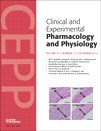Kujal P, Chábová VČ, Vernerová Z, Walkowska A, Kompanowska-Jezierska E, Sadowski J, Vaňourková Z, Husková Z, Opočenský M, Skaroupková P, Schejbalová S, Kramer HJ, Rakušan D, Malý J, Netuka I, Vaněčková I, Kopkan L, Cervenka L. Clin Exp Pharmacol Physiol. 2010 Dec;37(12):1159–69. doi: 10.1111/j.1440-1681.2010.05453.x. IF: 1.936

Abstract:
1. Hypertension plays a critical role in the progression of chronic kidney disease (CKD) to end-stage renal disease (ESRD), but it has also been postulated that antihypertensive drugs that block the renin-angiotensin system (RAS) show class-specific renoprotective actions beyond their blood pressure (BP)-lowering effects. 2. Because this notion has recently been questioned, in the present study we compared the effects of a RAS-dependent antihypertensive therapy (a combination of trandolapril, an angiotensin-converting enzyme inhibitor (ACEI) and losartan, an angiotensin-II (AngII) receptor subtype 1A receptor antagonist) with a ‘RAS-independent’ antihypertensive therapy (a combination of labetalol, an alfa- and beta-adrenoreceptor antagonist with the diuretics, hydrochlorothiazide and furosemide) on the progression of CKD after 5/6 renal ablation (5/6 NX) in Ren-2 renin transgenic rats (TGR), a model of AngII-dependent hypertension. Normotensive transgene-negative Hannover Sprague-Dawley (HanSD) rats after 5/6 NX served as controls. 3. RAS-dependent and -independent antihypertensive therapies normalized BP and survival rate, and prevented the development of cardiac hypertrophy and glomerulosclerosis to the same degree in 5/6 NX HanSD rats and in 5/6 NX TGR. The present findings show that renoprotection, at least in rats after 5/6 NX, is predominantly BP-dependent. When equal lowering of BP was achieved, leading to normotension, cardio- and renoprotective effects were equivalent irrespective of the type of antihypertensive therapy. 4. These findings should be taken into consideration in attempts to develop new therapeutic approaches and strategies aimed to prevent the progression of CKD and to lower the incidence of ESRD.
-mk-